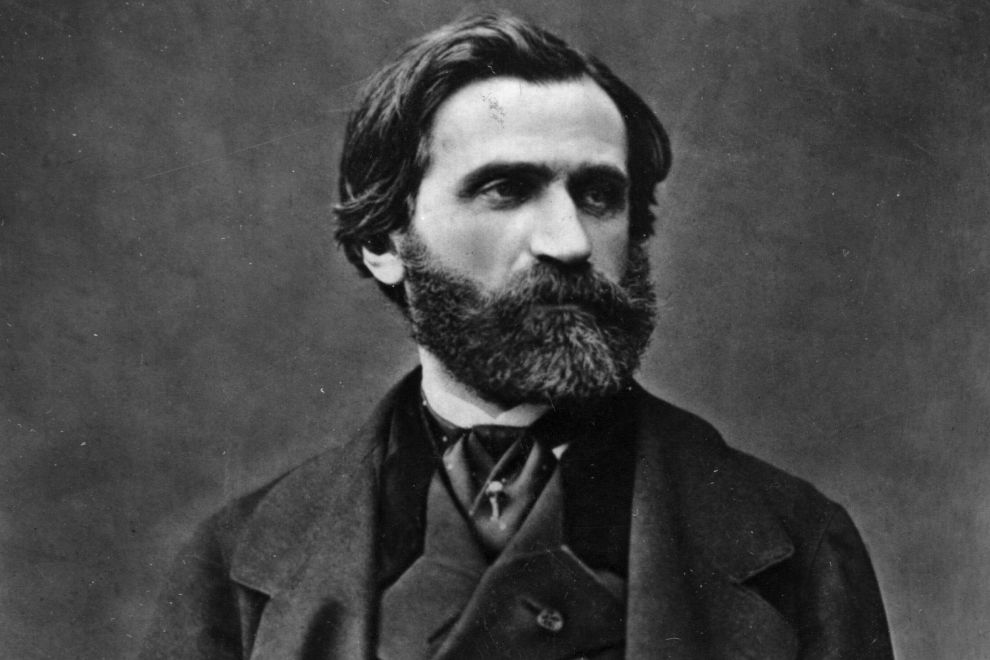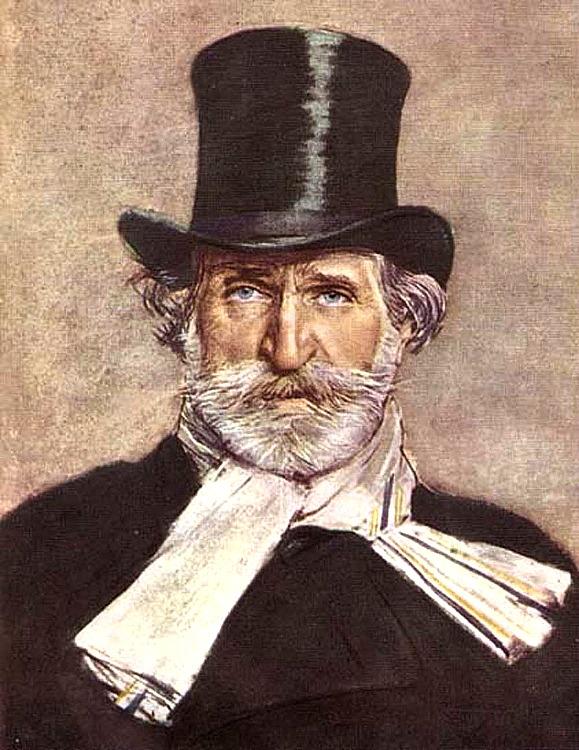This year marks the 200th anniversary of the birth of one of the greatest Italian romantic composers of all time. Giuseppe Verdi was responsible for some of the best known operas, which are still widely known and revered today. La traviata. Aida. Rigoletto. Just the tip of the iceberg of Verdi's broad portfolio. But who was Giuseppe Verdi? What drove the man behind the music? John Bensalhia investigates...
The Early Years
Giuseppe Verdi was born on 10th October 1813 in Le Roncole village near Busseto. Even though Verdi became one of Italy's most prominent composers, he was actually christened a Frenchman. Only a matter of days after his birth, Verdi was taken by his father to Busseto, whereupon his name was logged as Joseph FortuninFrançois. Indeed, the clerk is said to have written at the time “So it happened that for the civil and temporal world, Verdi was born a Frenchman”. Music was already looming large on a young Verdi's horizon – a huge library in Busseto is said to have sparked Verdi's interest in music. By the age of 20, he was privately learning the musical art of counterpoint in Milan, and knew that a future as a theatre composer was awaiting him with open arms. His musical influences are said to include Rossini, Giacomo Meyerbeer and Bellini.

Music Takes Flight - Swings and Roundabouts
Having become Busseto's music master on his arrival, Antonio Barezzi was to prove to be an important link in Verdi's life. He requested that Verdi teach his daughter Margherita in music. In fact, Verdi and Margherita ended up falling in love, ultimately getting married and having a family – however, this was to end in tragedy (see personal life). It was in 1839 that Verdi's operatic vision began to take root. His first opera, Oberto, was produced in the November of that year by La Scala of Milan – the organisation's representative Bartolomeo Merelli was impressed enough to offer Verdi a contract that would guarantee three more works. However, after such a promising start, the next few years were not quite so forthcoming. Not only was Verdi's second opera Un giorno di regno a comparative flop in 1840, his wife had sadly passed away. Disillusioned, Verdi's intention of abandoning music was stopped by Merelli, who managed to persuade Verdi to have another go at writing opera. The resulting Nabucco was more of a success and paved the way forward for a hugely successful run ahead in the next decade.
Personal Fortune and Tragedy Although Verdi's personal life was full of romance, it was also dogged by tragedy. Margherita, daughter of Antonio Barezzi, became Verdi's wife on 4th May 1836. Margherita gave birth to two children, but already, tragedy struck, as both children died at a young age. Margherita herself passed away at the young age of 26, leaving Verdi devastated. In the 1840s, Verdi was to find love again – this time with a soprano called Giuseppina Strepponi [in the picture]. The couple were to gain notoriety for living together before marriage, although they ultimately wed in August 1859. Sadly, Giuseppina was to also pass away before Verdi.
Although Verdi's personal life was full of romance, it was also dogged by tragedy. Margherita, daughter of Antonio Barezzi, became Verdi's wife on 4th May 1836. Margherita gave birth to two children, but already, tragedy struck, as both children died at a young age. Margherita herself passed away at the young age of 26, leaving Verdi devastated. In the 1840s, Verdi was to find love again – this time with a soprano called Giuseppina Strepponi [in the picture]. The couple were to gain notoriety for living together before marriage, although they ultimately wed in August 1859. Sadly, Giuseppina was to also pass away before Verdi.
Verdi was to become a close friend of another soprano called Teresa Stolz. It is said that Teresa became a close companion of Verdi's in the wake of his second wife's death. Quite how close is still a question of speculation, with rumours of a closer relationship than an initially professional one.
The Golden Age
Verdi's golden age really took root in the late 1840s to the early 1870s. During the period of the late 1840s and 1850s, Verdi produced a string of acclaimed operas, some of which would become his most enduring works. These included I Lombardi, Rigoletto (which includes La Donna e Mobile) and La traviata. By now, Verdi's operas were now expressing his diverse palette of story styles – for example, the tragedy of the main protagonist Violetta in La traviata contrasted with the drama comedy of Rigoletto.

Giuseppe Verdi - La Traviata
The later part of Verdi's golden age was to prove just as fruitful, with many well-known and popular operas including Aida, La forza del destino and Don Carlos. He also wrote the famous Requiem Mass honouring the novelist and poet Alessandro Manzoni.
Political Ideals
The curious thing about Verdi is that he is said to have despised politics. However, a number of Verdi's works are said to contain political aspects. It is said that some of Verdi's early operas incorporated hidden messages relating to the Risorgiomento, a political and social movement that gathered together Italian peninsula states into one collective state of Italy in the 19th century. In 18 February 1861, Victor Emmanuel II of Sardinia was crowned as the first king of the newly formed Italian nation. During the struggle for independence, the slogan ‘Viva VERDI!’ was used as an acronym for Viva Vittorio Emanuele Re D'Italia (Long Live Victor Emmanuel King of Italy). He was elected as a member of the new Chamber of Deputies and was later made a Senator of the Kingdom by the King.
Although not overly concerned with the political struggle of the Italian Risorgimento, Verdi’s music galvanised his compatriots, stirred their national spirit. A common school of thought is that Verdi did not intend to broadcast these sorts of political messages, but a good number of people latched onto possible political interpretations.
The Final Years
Even in his twilight years, Verdi had still not lost the knack for producing highly acclaimed, richly constructed operas. 1887's Otello was a case in point, a work of art that told a story of great tragedy and emotion through strong characterisation and evocative melody. It marked a difference in structure however, taking up one constant suite rather than a series of separate segments. Also, during his final years, Verdi opted to revise earlier works such as La forza del destino and Don Carlos.
Verdi's last opera was rooted in Shakespeare – a number of his works were based on the tragic elements of Shakespeare's plays (for example, La Traviata and Aida). Falstaff was based on the Merry Wives Of Windsor and Henry IV Part 1. Verdi's final composition was the last of four sacred works, Quattro Pezzi Sacri.

Death
Giuseppe Verdi suffered a stroke on 21st January 1901, and six days later, passed away. He received a full state funeral in Milan, which is said to be the biggest public assembly of an event in Italy to this day.
He was buried at first in Milan's Cimitero Monumentale, but a month later was transferred to Casa di Riposo per Musicisti, a rest home for musicians which Verdi himself had founded in 1896.
Related Articles:
*) Italy Celebrates Verdi Bicentennial: The Guide
*) Opera Houses Worldwide Mark Verdi Bicentennial
*) Verdi Lovers Unite To Sing For Royal Opera House
*) Italy's Treasures: Maria Montessori
*) Italy's Treasures: Dante
*) Italy's Treasures: Michelangelo
*) Italy's Treasures: Andrea Bocelli
*) Italy's Treasures: Leonardo Da Vinci



